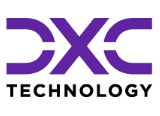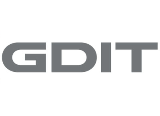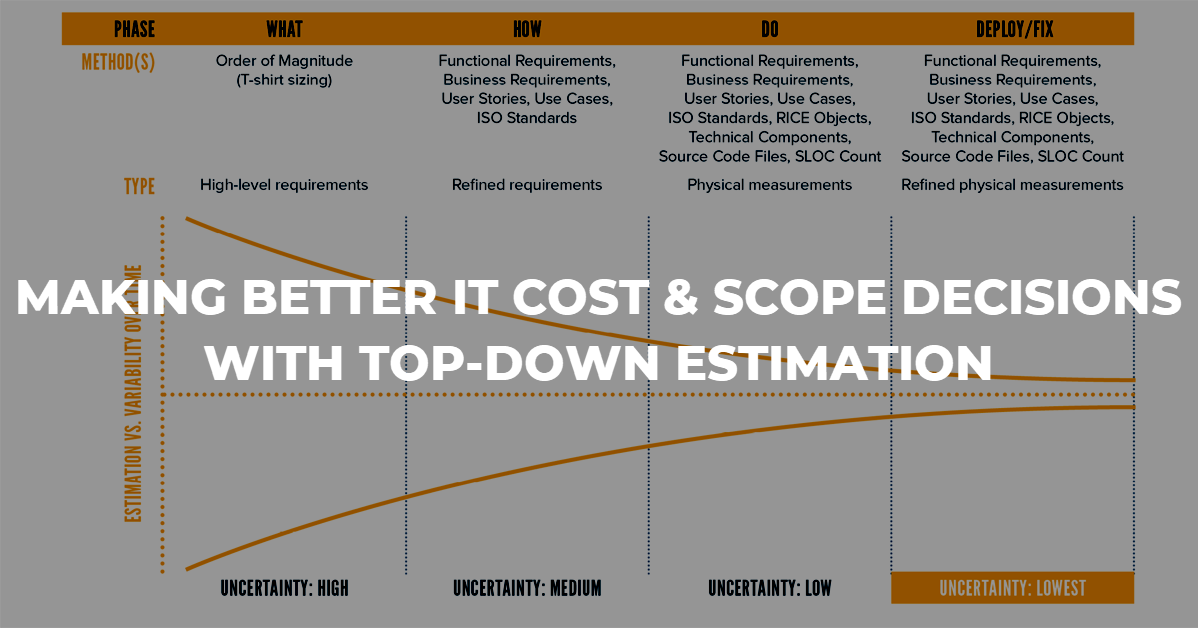DXC Technology




Moving to the cloud is big business these days. With any type of digital transformation; managing the migration, integration, and development work can be a stressful experience with a lot of risk. Wouldn't it be great to have a crystal ball that allowed you to make these big cost, staff and schedule decisions early in the planning process? I'll propose the next best thing: a database of completed and validated projects spanning multiple industries and development methodologies that can help you predict the way your project will behave.
The QSM Industry Database can provide this type of knowledge. With over 40 years of research and development, it includes metrics from thousands of completed technology projects from various application domains and industries. By leveraging this type of database, you can access industry benchmarks that can help you navigate the uncertainty that comes with planning IT transformations, software engineering, and cloud migrations.
What should this cloud migration cost? How long should it take? How many people will you need? What level of quality and productivity needs to be achieved to have a successful delivery? What are the chances of finishing within a 6-month time frame versus a 10 month? The secret to finding these answers is in the historical data. The way to bring that data to life is to use good scope-based estimation methods. In a view from QSM's SLIM-Estimate tool below, you can see some examples of how you might measure the size of a particular cloud migration to get started with an estimate.

If you were unable to attend our recent webinar, "Making Better IT Cost & Scope Decisions with Top-Down Estimation," a replay is now available.
This year thousands of software, cloud migration, and IT development managers will spend long hours developing very detailed, bottom-up plans. Unfortunately, many of these plans will be unreliable, because they don't take into account the big picture. Generating top-down estimates, before detailed planning occurs, allow managers to see the overall development and delivery targets for cost and scope. This allows for managing project expectations and even negotiation before work gets underway.
This presentation includes a Q&A session with the audience and covers such topics as:
Keith Ciocco has more than 30 years of experience working in sales and customer service, with 25 of those years spent with QSM. As Vice President, his primary responsibilities include supporting QSM clients with their estimation and measurement goals, managing business development and existing client relations. He has developed and directed the implementation of the sales and customer retention process within QSM and has played a leading role in communicating the value of the QSM tools and services to professionals in the software development, engineering and IT industries.

This year thousands of software, cloud migration, and IT development managers will spend long hours developing very detailed, bottom-up plans. Unfortunately, many of these plans will be unreliable, because they don't take into account the big picture. Generating top-down estimates, before detailed planning occurs, allow managers to see the overall development and delivery targets for cost and scope. This allows for managing project expectations and even negotiation before work gets underway.
In this session, you will learn:
Keith Ciocco has more than 30 years of experience working in sales and customer service, with 25 of those years spent with QSM. As Vice President, his primary responsibilities include supporting QSM clients with their estimation and measurement goals, managing business development and existing client relations. He has developed and directed the implementation of the sales and customer retention process within QSM and has played a leading role in communicating the value of the QSM tools and services to professionals in the software development, engineering and IT industries.
Register now to reserve your spot for this webinar presented by Keith Ciocco on Sept. 15th at 1 PM EDT.
This year thousands of software, cloud migration, and IT development managers will spend long hours developing very detailed, bottom-up plans. Unfortunately, many of these plans will be unreliable, because they don't take into account the big picture. Generating top-down estimates, before detailed planning occurs, allow managers to see the overall development and delivery targets for cost and scope. This allows for managing project expectations and even negotiation before work gets underway.
In this session, you will learn:
About the presenter:
In most organizations, spreadsheets play a vital role for a variety of uses, from time keeping to budgeting to even estimating software development releases. They offer a level of familiarity - most of us cut our technical teeth on spreadsheets from a young age and have grown with them as we advanced our careers. When it comes to estimating software development, spreadsheets are a common “go-to,” but an estimation tool offers more flexibility, timely “what-if” changes and far less complexity for new and seasoned estimators alike.
Have you ever been in an organization in which the estimation spreadsheet was so complex and cumbersome that only a select few knew how to use it? This leaves an organization vulnerable to perhaps a single link of institutional knowledge upon which they are making vital business decisions. And if that one project manager, analyst or architect leaves the organization, switches roles, or retires, what then? Even if they go on vacation for 2 weeks, you’re left with a spreadsheet that may have an impossible learning curve for anyone else hence delaying or possibly negating the estimates being created at all.

In talking with many organizations about their IT estimation practices over the years, I’ve noticed a recurring theme has been their self-perception of immaturity when addressing the use of a commercial estimating tool. Estimates in the workforce are typically generated via the Delphi method, multi-tabbed spreadsheets, and uncalibrated guesses. When recommending a top-down tool approach, the feedback can be: “we aren’t mature enough to use a tool or model.”
I’ve actually seen the opposite. The top-down approach offers an on-ramp to more formal estimating by its very nature of needing few inputs, rather than the myriad of cells, rows, and columns required to be populated in a spreadsheet. A top-down tool approach leads us away from relying on the institutional knowledge of a few people that may have relevant experience, but one day may retire or move on from the organization taking that knowledge -with them. Also, a parametric top-down approach leveraging relevant historical data is much better than a wet thumb in the air.